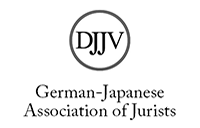Japanese Corporate Law: Important Cases in 2011
Abstract
This paper introduces four recent court decisions and highlights their importance to the development of Japanese corporate law under the new Company Code enacted in 2005.
In the first two cases, the Supreme Court addressed an issue concerning the ‘fair value’ at which shareholders opposing a corporate restructuring plan may have their shares purchased by the company through exercising their right to share redemption (Art. 786 Para. 2 of the Company Code). Previously, the question of what the ‘fixed time’ (with reference to which the ‘fair value’ is calculated) should be under the new dissenting shareholder regime (which was substantially reformed by the enactment of the Company Code in 2005) was not definitively answered in a string of inconsistent lower court decisions. The Supreme Court in two almost-contemporaneous decisions settled the question, holding that the fixed time is the point at which the dissenting shareholders make their demand for share redemption.
In the third case, the company was near-insolvent and unable to compensate the losses of a party who had contracted with the company, due to misappropriation of company assets by a company shareholder who, though not a director, was the controlling mind behind the company. The contracting party sued the shareholder for damages. On an analogical application of Art. 429 Para. 1 of the Company Code, the Nagoya District Court found the shareholder, although he was not a director, nevertheless liable to the plaintiff as a de facto representative director of the company. This decision is of similar character to earlier decisions holding non-directors liable as de facto directors under the Commercial Code prior to the commencement of the Company Code
The last case is an example of the increasingly-common abuse of the corporationsplit mechanism by insolvent corporations to prevent their debt liabilities from being assumed by their successor corporations. The plaintiff (a debt collection company) sued the successor corporations of its debtor (the splitting corporation), which had succeeded to the assets and business of the splitting corporation without the endorsement of the plaintiff, for the satisfaction of its claims against the splitting corporation. In allowing the plaintiff’s claim directly against the successor corporations by lifting the corporate veil, the Fukuoka District Court held that since the principle of lifting the corporate veil is distinct from the right to demand rescission of fraudulent acts under Art. 424 of the Civil Code in its requirements and effects, a remedy through lifting the corporate veil is not precluded by the existence of the Civil Code remedy.
(Alan K. Koh)






